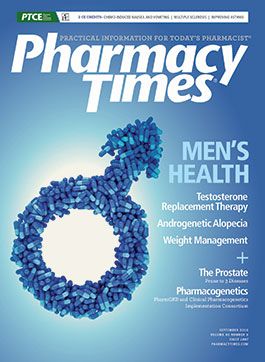Publication
Article
Pharmacy Times
Will Bending the Curve Be Enough?
For the past decade, health economists and policy makers have frequently espoused the following axiom: bending the cost curve will enable a sustainable health care system.
For the past decade, health economists and policy makers have frequently espoused the following axiom: bending the (health care) cost curve will enable a sustainable health care system. If we don’t bend the curve (they say), we will have to make very tough choices about which non—health care purchases we will forgo, in terms of personal expenses and collective expenses (ie, taxes), in order to purchase health care. Faced with the daunting reality of an aging and increasingly chronically ill population, almost no one promotes the idea of flattening the cost curve. So, instead, we aspire to slow down growth.
In a recent Health Affairs blog,1 Charles Roehrig warns that “moderate” health spending growth, even if dramatically reduced from previous growth projections, still puts the United States in a potentially dire fiscal situation over the next few decades. Recent projections for national health expenditures (NHE) put us on a medium-run path “moderate” growth rate of 5% to 7% compared with the average of 7.8% year-over-year growth, at which we’ve been sprinting since 1980.
Blame the recession or credit the Affordable Care Act for the recent 7-year slowdown in NHE growth. It doesn’t matter; we are still on a path toward great unease and discomfort regarding the cost of our health care, with consumption greatly outpacing overall (non—health care) growth over the medium and long run.
The problem? Our economy isn’t growing at a similarly “moderate” pace. Our gross domestic product (GDP)—the measure of all outputs in our economy—is projected to grow 4.5% over the next decade or so. This is a healthy “Goldilocks” growth rate for any country as large as the United States. Health care, however, has been growing at such a rapid pace, for so long, that reductions in the growth rate cause us to believe that expenditures are “moderating” when, in actuality, we’ve moved from obscene growth to excessive growth.
Roehrig points out that our NHE is projected to grow at a rate 1.3 percentage points higher than GDP every year. This doesn’t seem like much, right? Well, try translating this excess growth as follows: from 2007 to 2025, 42% of our income gains will be devoted to health care spending, not to transportation, food, or shelter, and, most certainly, not to primary or secondary education. In addition, income gains will not be devoted to police or firefighters or to roads and other infrastructure needed to ensure prosperity. Remember that medical interventions account for less than 20% of our overall health and well-being. If all defense and non—health care spending were kept constant, a tax revenue increase of 20% would be required to offset the projected growth in health care spending, given our current collective obligations.1
The proportion of our NHE derived from drug purchasing has actually fallen below GDP growth over the past few years, owed to a multiyear small-molecule patent “cliff.” Not surprisingly, a complete reversal in this slowdown is projected as we enter the age of biologics and other advanced therapeutics.
What does this all mean for the business and practice of pharmacy? In all likelihood, an emphasis on 2 trajectories will continue. First, pharmacists and pharmacy systems will be expected to keep playing a major role as the drug cost “police.” Second, there is an emerging expectation that pharmacists play an indispensable role in changing the health trajectory of our population by achieving greater health for each dollar invested in health care delivery. For my money, the latter is the only viable, durable, and ethical manner in which to flatten the cost curve.
Troy Trygstad, PharmD, PhD, MBA, is vice president of Pharmacy Programs for Community Care of North Carolina (CCNC), which works collaboratively with more than 1800 medical practices to serve more than 1.6 million Medicaid, Medicare, commercially insured, and uninsured patients. He received his PharmD and MBA degrees from Drake University and a PhD in pharmaceutical outcomes and policy from the University of North Carolina. He also serves on the board of directors for the American Pharmacists Association Foundation.
REFERENCE
- Roehrig C. ‘Moderate’ health spending growth projections exceed what we can afford. healthaffairs.org/blog/2016/08/10/ moderate-health-spending-growth-projections-exceed-what-wecan-afford/. Published August 10, 2016. Accessed August 15, 2016.







